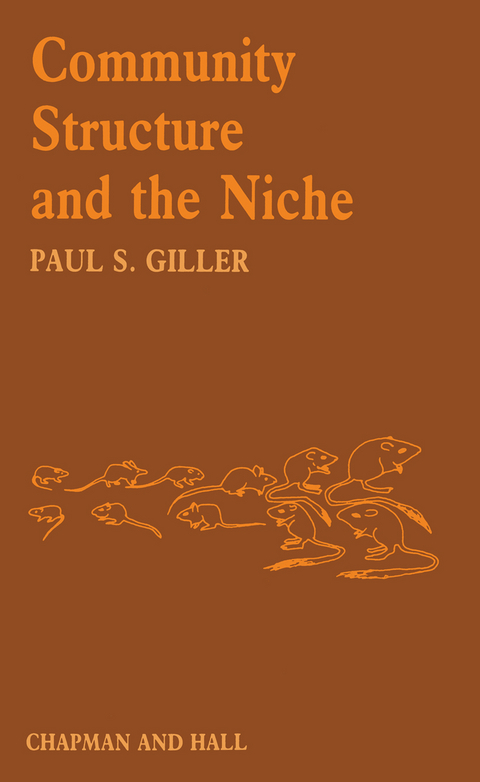
Community Structure and the Niche
Chapman and Hall (Verlag)
978-0-412-25110-8 (ISBN)
During the past two decades, there has been a gradual change of emphasis in ecological studies directed at unravelling the complexity of natural communities. Initially, the population approach was used, where interest lay in the way individual populations change and in the identification of factors af fecting these changes. A good understanding of the dynamics of single populations is now emerging, but this has not been a very fruitful approach at the community level. In the natural world, few species can be treated as isolated populations, as most single species are the interacting parts of multispecies systems. This has led to a community approach, involving the study of interrelationships between species within com munities and investigation of the actual organization of natural communities as a whole. The formalization of a number of new concepts and ideas has evolved from this approach, including niche theory, resource allocation, guild structure, limiting similarity, niche width and overlap etc. , which, until fairly recently, have been examined mainly from a theoretical point of view. However, a wealth of field data is gradually being added to the literature, especially from the general areas of island biogeography and resource partitioning amongst closely related species. Community structure embodies patterns of resource allocation and spatial and temporal abundance of species of the community, as well a. '1 community level properties such as trophic levels, succession, nutrient cycling etc.
1 Introduction and definitions.- 1.1 The community.- 1.2 Community structure.- 1.3 Species diversity.- 1.4 Trends in species richness.- 1.5 The problem restated.- 2 Niche theory.- 2.1 Development of the niche concept.- 2.2 Niche width.- 2.3 Niche overlap.- 2.4 Diffuse competition.- 2.5 Niche dynamics.- 2.6 The niche — a property of the species or the community?.- 2.7 Summary.- 3 Competition and the niche; the effect on niche width.- 3.1 Theoretical effects of competition on the species niche.- 3.2 Criteria for the identification of competition in the field.- 3.3 The natural effects of intraspecific competition.- 3.4 The natural effects of interspecific competition.- 3.5 Conclusion.- 4 Competition and the niche; limiting similarity and differential niche overlap.- 4.1 Limiting similarity — the theoretical approach.- 4.2 The degree of limiting similarity.- 4.3 Niche dimensionality and differential overlap.- 4.4 Conclusion.- 5 Predation and species diversity.- 5.1 Theoretical studies.- 5.2 Plant—herbivore interactions.- 5.3 Predator—prey interactions.- 5.4 Reduced community diversity through predation.- 5.5 Conclusion.- 6 Competition and predation; complementarity of the hypotheses.- 6.1 The controversy.- 6.2 Interactions between competition and predation.- 6.3 Classification scheme.- 6.4 Conclusion.- 7 Saturation of communities.- 7.1 True islands.- 7.2 Habitat islands.- 7.3 Host plant islands.- 7.4 Continental saturation.- 7.5 Conclusion.- 8 Species diversity trends — theories and hypotheses.- 8.1 Time.- 8.2 Environmental conditions.- 8.3 Biotic factors.- 8.4 Explanations of species diversity patterns in two specific examples.- 8.5 Conclusion.- 9 The relative abundance of species.- 9.1 Fisher’s series.- 9.2 Lognormal distribution.- 9.3 ‘Broken stick’ orrandom niche boundary hypothesis.- 9.4 Niche pre-emption or geometric series hypothesis.- 9.5 Conclusion.- 10 Community structure: the patterns and rules.- 10.1 Community patterns.- 10.2 Communities: random or structured species associations.- 10.3 Community rules.- 10.4 Expressions of community structure.- 10.5 Stability/diversity relationships.- 10.6 Concluding remarks.- References.
| Erscheint lt. Verlag | 6.9.1984 |
|---|---|
| Zusatzinfo | X, 176 p. |
| Verlagsort | London |
| Sprache | englisch |
| Maße | 140 x 216 mm |
| Themenwelt | Naturwissenschaften ► Biologie ► Ökologie / Naturschutz |
| Recht / Steuern ► Öffentliches Recht ► Umweltrecht | |
| ISBN-10 | 0-412-25110-8 / 0412251108 |
| ISBN-13 | 978-0-412-25110-8 / 9780412251108 |
| Zustand | Neuware |
| Haben Sie eine Frage zum Produkt? |
aus dem Bereich


